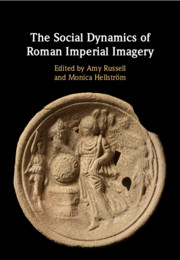Refine search
Actions for selected content:
23990 results in Ancient history
Nine - Ceasing Empire
- from Part III - Empire of Things
-
- Book:
- The Making of Empire in Bronze Age Anatolia
- Published online:
- 27 October 2020
- Print publication:
- 12 November 2020, pp 264-300
-
- Chapter
- Export citation
Six - Arresting Geographies – Ambiguous Edges
- from Part II - On Empire’s Edges
-
- Book:
- The Making of Empire in Bronze Age Anatolia
- Published online:
- 27 October 2020
- Print publication:
- 12 November 2020, pp 175-194
-
- Chapter
- Export citation
Epigraphic Appendix
- from 9 - Imagines et tituli
-
- Book:
- The Social Dynamics of Roman Imperial Imagery
- Published online:
- 09 November 2020
- Print publication:
- 12 November 2020, pp 234-246
-
- Chapter
- Export citation
Figures
-
- Book:
- The Social Dynamics of Roman Imperial Imagery
- Published online:
- 09 November 2020
- Print publication:
- 12 November 2020, pp vii-xii
-
- Chapter
- Export citation
Copyright page
-
- Book:
- The Social Dynamics of Roman Imperial Imagery
- Published online:
- 09 November 2020
- Print publication:
- 12 November 2020, pp iv-iv
-
- Chapter
- Export citation
7 - Local Aspirations and Statues of Emperors in Roman North Africa
-
-
- Book:
- The Social Dynamics of Roman Imperial Imagery
- Published online:
- 09 November 2020
- Print publication:
- 12 November 2020, pp 159-179
-
- Chapter
- Export citation
5 - Roman Emperors, Conquest, and Violence
-
-
- Book:
- The Social Dynamics of Roman Imperial Imagery
- Published online:
- 09 November 2020
- Print publication:
- 12 November 2020, pp 100-127
-
- Chapter
- Export citation
6 - Court Politics and Imperial Imagery in the Roman Principate
-
-
- Book:
- The Social Dynamics of Roman Imperial Imagery
- Published online:
- 09 November 2020
- Print publication:
- 12 November 2020, pp 128-158
-
- Chapter
- Export citation
Dedication
-
- Book:
- The Making of Empire in Bronze Age Anatolia
- Published online:
- 27 October 2020
- Print publication:
- 12 November 2020, pp v-vi
-
- Chapter
- Export citation
Two - Placing Empire
- from Part I - Empire at Home
-
- Book:
- The Making of Empire in Bronze Age Anatolia
- Published online:
- 27 October 2020
- Print publication:
- 12 November 2020, pp 51-99
-
- Chapter
- Export citation

Plutarch and the Persica
-
- Published by:
- Edinburgh University Press
- Published online:
- 11 November 2020
- Print publication:
- 16 July 2018

The Social Dynamics of Roman Imperial Imagery
-
- Published online:
- 09 November 2020
- Print publication:
- 12 November 2020

Women and Society in the Roman World
- A Sourcebook of Inscriptions from the Roman West
-
- Published online:
- 06 November 2020
- Print publication:
- 19 November 2020
maps
-
- Book:
- The Athenian Empire
- Published online:
- 19 October 2020
- Print publication:
- 05 November 2020, pp xxvi-xxviii
-
- Chapter
- Export citation
Appendix A - Weight Standards and Denominational Systems
-
- Book:
- The Athenian Empire
- Published online:
- 19 October 2020
- Print publication:
- 05 November 2020, pp 148-151
-
- Chapter
- Export citation
4 - Numismatic Narratives in the Pentekontaetia, 479–431 BC
-
- Book:
- The Athenian Empire
- Published online:
- 19 October 2020
- Print publication:
- 05 November 2020, pp 73-88
-
- Chapter
- Export citation
Preface
-
- Book:
- The Athenian Empire
- Published online:
- 19 October 2020
- Print publication:
- 05 November 2020, pp xxi-xxii
-
- Chapter
- Export citation
Maps
-
- Book:
- The Athenian Empire
- Published online:
- 19 October 2020
- Print publication:
- 05 November 2020, pp xix-xix
-
- Chapter
- Export citation
8 - Epilogue: From Tribute to Taxation
-
- Book:
- The Athenian Empire
- Published online:
- 19 October 2020
- Print publication:
- 05 November 2020, pp 140-145
-
- Chapter
- Export citation
Index
-
- Book:
- The Athenian Empire
- Published online:
- 19 October 2020
- Print publication:
- 05 November 2020, pp 170-174
-
- Chapter
- Export citation
